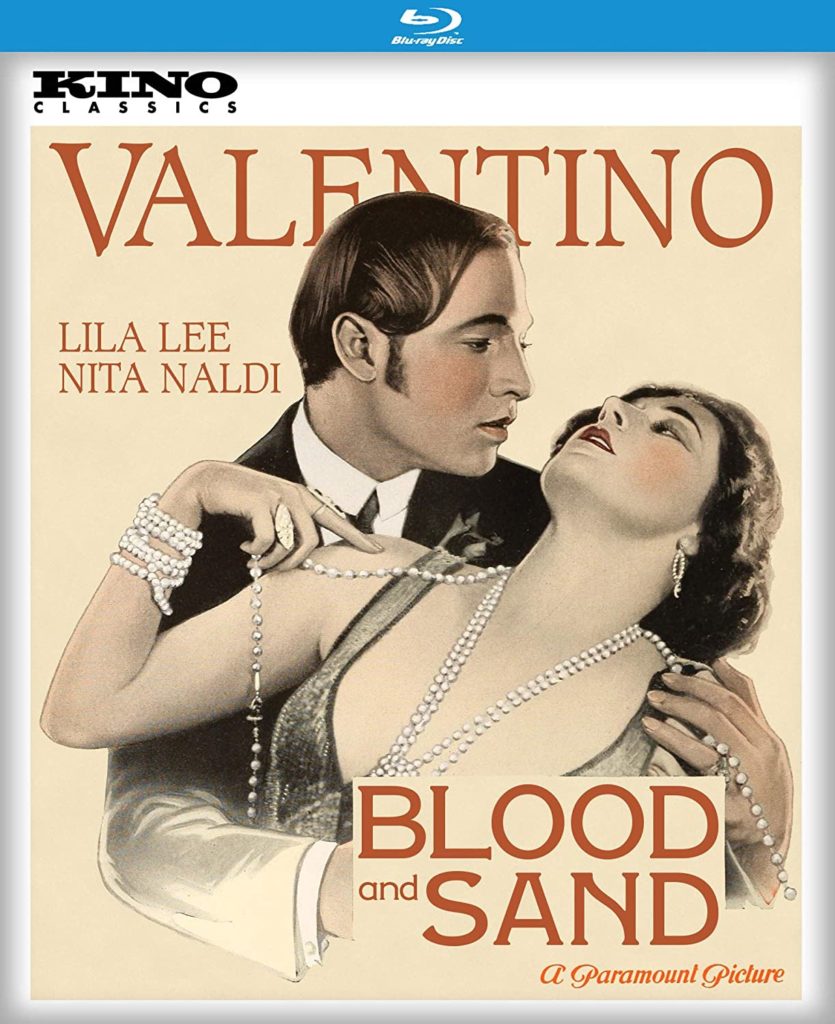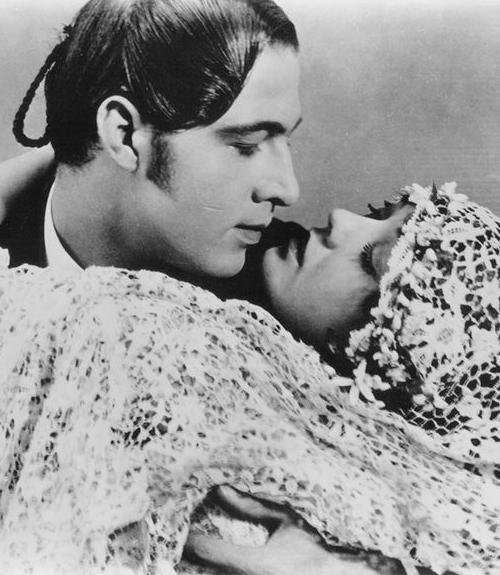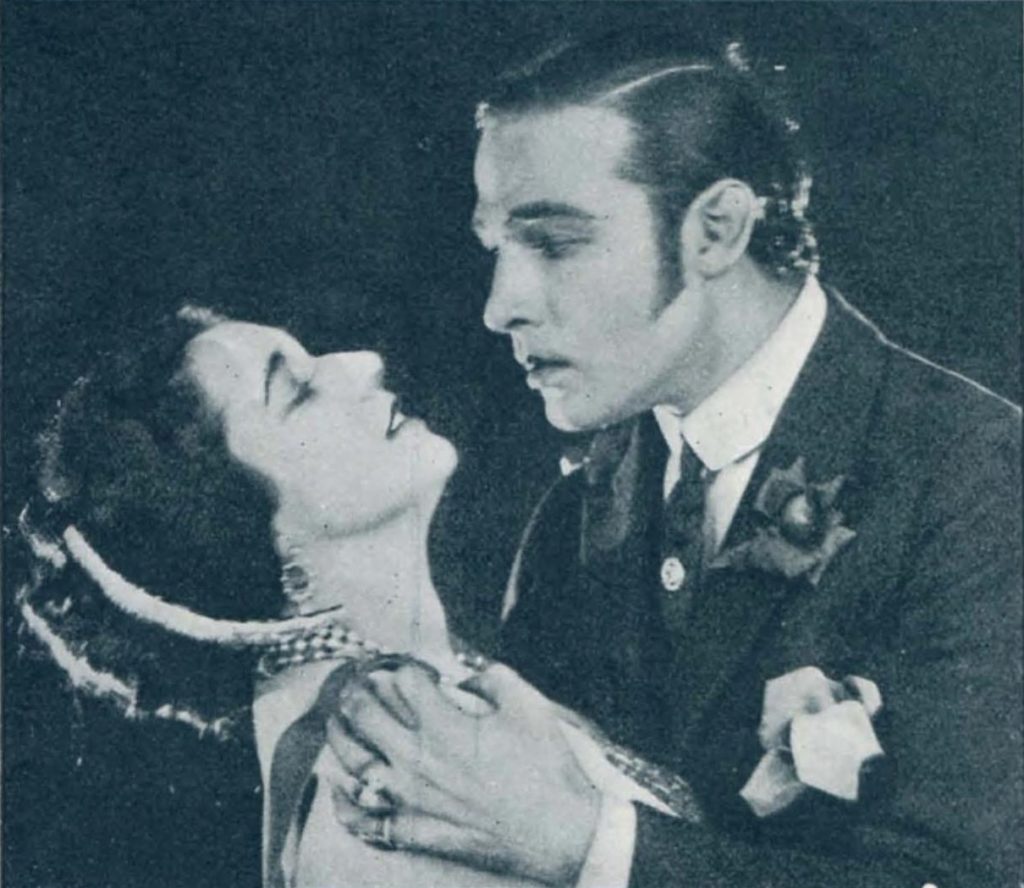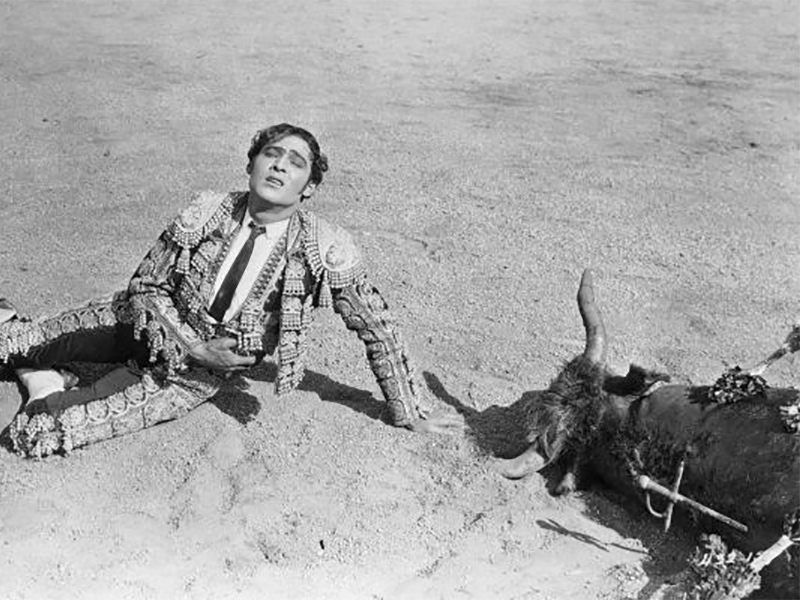Valentino is a Toreador Caught up in Passion in 1922 Silent Classic.
DIRECTED BY FRED NIBLO/1922
STREET DATE: FEBRUARY 11, 2020/KINO CLASSICS

Blood and Sand has been a long-standing favorite film of mine for quite some time. When KINO announced that there would be an upgrade to their 2001 DVD edition, I was extremely excited to see a 4K mastering of the obviously good elements they’d released nearly 20 years ago.
If that wasn’t enough, I found out, from Donna Hill’s Twitter, I think, that this edition would include footage which had not been seen by most audiences since close to its release: the sash scene, located in the EYE Filmmuseum’s print has been restored. This particular scene was subject to parody in contemporary comedy (see Mud and Sand by Stan Laurel) but until the release of this home video edition, most armchair Valentino fans like myself had not seen it. It’s a rather fun sequence and easy to see why folks of the time latched onto it…it doesn’t move the action forward but is memorable nonetheless.
But I’m getting ahead of myself.
The story is one of a ne’er-do-well, Juan (played by Rudolph Valentino) who finds that his passion for bullfighting brings him notoriety after one of his friends is killed in the ring. This added attention includes a love interest, Carmen, played in all her innocence by Lila Lee. (Yes, Virginia, Carmen is a good character in this film.) Lee’s performance hits many, if not all, of the right notes. A young woman, perhaps a bit sheltered, but devoted to Juan. Appropriate amounts of family drama are peppered into the domestic scenes.

A town philosopher makes an appearance into the story at the 21st minute or so. Played by Charles Belcher, this character may seem an odd, moralistic presence in the story. I personally find the character to be a trifle clunky but perfectly understandable given other movies made at the time. One need look no further than Valentino’s break-out success The Four Horsemen of the Apocalypse to find such a narrator who is making pronouncements on events around them despite their lack of attachment to the characters in the unfolding drama.

Valentino ascends the social ladder, marrying his sweetheart, and fighting against bulls and his own demons of wanting to be wanted. Enter, Doña Sol. Played seductively by Nita Naldi, she is a rich widow who seems to enjoy manipulating people and exploiting both the sexual magnetism of herself and Juan. I must admit, it’s an intoxicating cocktail comprised of emotional and sexual spirits. There’s eye flaring on everyone’s part (maybe not Ms. Lee’s), but that’s hardly the tell-tale sign that this is a century-old film; after all, Ill-advised acting practices continue into the present day.

A word about why I find this film compelling. Blood and Sand is an opportunity to examine the desire to be wanted and how we wield that desire in our lives, that is to say, our relationships. Are we intoxicated with the attention paid to us? Do we desire more of it? Are we afraid we are as Juan’s family said he was: useless and good-for-nothing? Are we fleeing from that picture of ourselves? Juan and Doña Sol are cautionary figures in this story of power, wealth, and desire. Neither get what they want at the final curtain. Only one pays with their life; the other is seemingly unaffected but one who has lived a bit of life knows that to be unaffected in the face of power abused is to have sacrificed one’s own humanity. Carmen keeps her dignity, her love, and her humanity in the story. In a world full of Juans and Doña Sols, it just might be better to be Carmen.
The commentary by Anthony Slide is informative enough but rather self-important. Yes sir, I get that you are a proud member of PETA. Might I suggest you review a film sometime in which you don’t have to remind your audience of this fact? His habits are akin to a gay man, like myself, scoffing every 10 minutes (or less!) about how ridiculous the straights are in the film. We get it. Move on.
The enclosed booklet by Donna Hill, a noted Valentino scholar, fan, and author of a book I have on my end table, Rudolph Valentino The Silent Idol: His Life in Photographs is a wonderful essay giving background for the film. It was an enjoyable read and helped me get into the milieu of the film before viewing, despite having seen the film many times.

The other special features are well executed and presented appropriately. One is an introduction by Orson Welles. Another is footage of the Valentino funeral. A third is the comedy short, Big Moments from Small Pictures which imitates Blood and Sand.
And now, for my comments on the music.
The music for this edition is by the same group who did the accompaniment twenty years ago for the DVD edition. It is a truly excellent score, spearheaded by Rodney Sauer and Susan Hall, with a performance for the ages from the Mont Alto Motion Picture Orchestra. I have long-adored this ensemble and this particular film’s score has long been the benchmark of a silent film’s score for me. For the curious, one can peruse the cue sheet to the 2001 DVD. The pieces for the new edition were re-synchronized and drawn from the pieces listed there, even for the new scene.
For those unfamiliar with Valentino’s work, I would start with either this film or The Eagle. Both are accessible in pacing and storytelling. Both Blu-ray releases feature clean images and scores which suit the action well.

